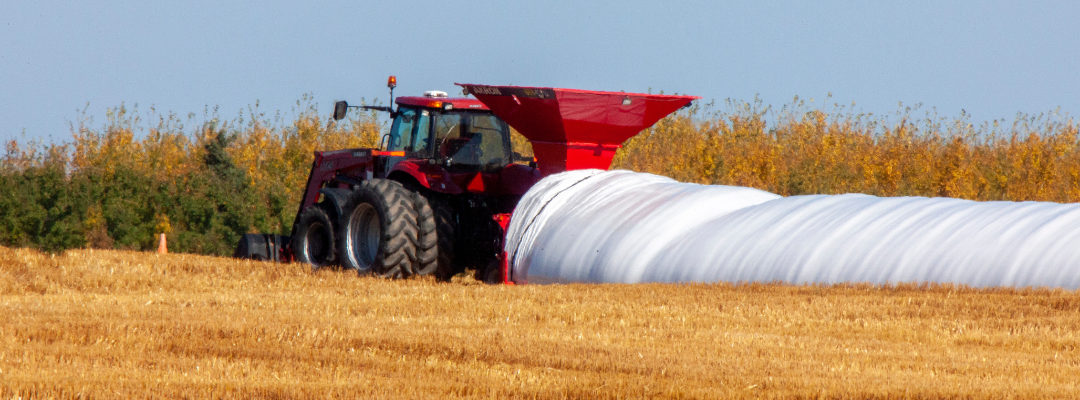Storage can be a valuable risk management and marketing tool for Southern corn producers. Storage allows producers to reduce harvest delays, avoid seasonal price lows, expand the marketing window, and harvest grain at higher moisture – if drying or aeration is available. There are two main options to store grain: grain bins or grain bags. This article provides an overview of the benefits, ownership costs, and operating costs for a grain bagging system.
Benefits
Labor continues to be a major challenge for agricultural producers. One of the primary benefits to using a bag system is the ability to reduce harvest labor requirements, particularly trucking. Storing corn at the edge of the field reduces the number of trucks required to keep combines running, avoids long lines at elevators and barge points, and distributes hauling to terminal markets during times of the year when labor is more readily available. Additionally, the ability to harvest a crop quickly reduces the risk of losses due to adverse weather. Extending the marketing interval allows producers to benefit from post-harvest price rallies. For example, in Memphis Tennessee, the ten-year average corn price was 70 cents higher in March/April compared to the harvest low. Mid-south producers that have cotton in their crop rotation can use bagging systems to modify annual storage availability, thus avoiding capital investment in permanent grain storage infrastructure when planted acreage varies year-to-year.
Ownership Costs
A bagging system requires capital investment in a loader, unloader, and tractor. This equipment is in addition to grain carts/trucks to transport grain from the combine to bagger. Purchase prices vary however many loaders can be obtained for less than $50,000. Bag unloaders will also cost around $50,000. Most operations will have access to a tractor that can be utilized in a bagging system, however this cost should also be included. Cost of ownership will vary for each operation; however, cost estimates should include capital recovery (depreciation + interest), taxes, insurance, and housing (TIH). For example, assuming an interest rate of 6.5% and TIH of 2.0% of the equipment value, estimated ownership costs for 100,000 bushels of storage is approximately 14 cents/bushel. Storing more bushels will distribute fixed costs lowering the ownership cost per bushel.
Operating Costs
Operating costs vary by system; however, producers should consider site preparation, purchase price of storage bags, labor (loading, unloading, and monitoring), insecticides, sensors, bag disposal, and machinery expenses (fuel, repair and maintenance). Additionally, producers should account for potential storage loss/risk. Wildlife damage, insect and rodent infestation, weather, and damage from humans present a risk for storage losses. Estimated operating costs based on the assumptions below in Table 1 are 17-22 cents per bushel. Costs are highly variable so producers are encouraged to estimate costs based on operation specific variables and assumptions.
Bagging systems may be a cost-effective method to store grain for Mid-south producers. Producers are encouraged to weigh the advantages and disadvantages of permanent storage (bin) and temporary storage (bag) systems to determine which system is best for their operation. Additionally, comparing ownership and operating costs with seasonal corn prices in your area will assist in determining if investment in storage is financially beneficial for your operation.
Table 1. Example: Operating Cost Assumptions
| Value | Unit | |
| Bag Size | 16,000 | bu |
| Bag Price | $1,100 | $/bag |
| Labor Rate | $22,000 | $/hr |
| Diesel Price | $6.00 | $/gallon |
| Interest Rate (Operating) | 6.5% | % |
| Repair and Maintenance | 5.0% | % of purchase price |
Resources:
Estimating Costs for Grain Storage: Bags and Bins- https://extension.tennessee.edu/publications/Documents/W1060.pdf
Spreadsheet: https://arec.tennessee.edu/grain-bag-and-bin-storage/
Duncan, Hence, and S. Aaron Smith. “Estimating the Cost of a Grain Bagging System.” Southern Ag Today 2(31.3). July 27, 2022. Permalink


